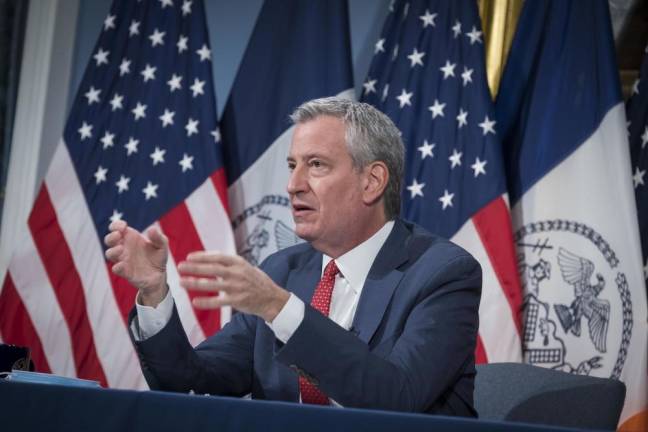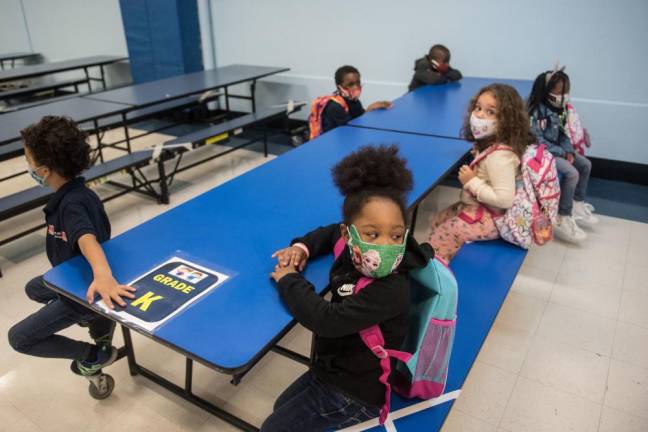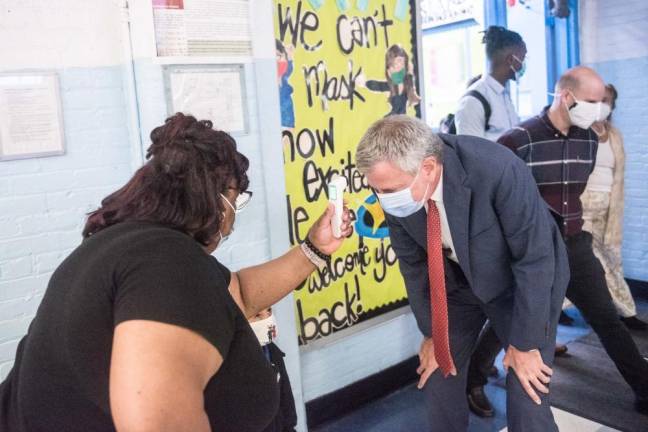After a week of sharp criticism, Mayor Bill de Blasio on Sunday announced a phased re-opening plan for the city’s public schools that will prioritize elementary school students and students with the most significant disabilities. Respectively, the two cohorts are scheduled to return the classroom on Dec. 7 and Dec. 10, while middle and high school students will continue remotely.
The mayor’s announcement represented a significant and swift change in his administration’s approach to education during the pandemic, which had largely been constructed around the citywide 3 percent test positivity threshold that shut schools down earlier in November. The city will be abandoning that figure, admitting in part that it was not a sustainable standard. The Department of Education is now charting a new course that relies much more on testing and one that the mayor said he hopes will keep the schools open and functioning until a vaccine is widely distributed in New York City.
“We know what we didn’t know over the summer, we know what works from actual experience,” de Blasio said of the schools’ new direction at a press conference Sunday.
The only way students can return to the classroom, de Blasio said, will be by turning in testing consent forms. When schools closed, only 117,000 of about 280,000 students had consented to be tested, which put an asterisk on the low in-school .28 positivity rate.
The city will also be ramping up the testing in schools by testing students and staff on a weekly basis rather than monthly, as it had been doing for the eight weeks that schools were open. Schools will be using the PCR diagnostic tests for students, with a two-day turnaround for the results, the mayor said.
Additionally, there will no longer be any citywide positivity rate that will trigger school closures. Instead, schools will be treated on a case-by-case basis and close individual classrooms and schools if multiple positive tests are returned. However, schools will be required to close if their location is encompassed in an “orange zone,” which would be determined by data from the state. Schools would be able to test out of closures by testing faculty and students regularly, and by testing before returning to school.
By treating schools individually, the mayor said the schools could avoid another complete system-wide shutdown for the remaining academic year.
In-Person Instruction
Notably, the city is going to start working toward bringing students into the classroom five days per week for those who are a part of the blended learning program. On Monday, Chancellor Richard Carranza said principals are currently analyzing if their respective schools can accommodate students on a full-week schedule, but the mayor said that it is likely that the majority of elementary and District 75 schools currently scheduled to re-open would be able to offer in-person instruction five days a week.
The mayor also indicated on Monday that it is not likely that middle and high school students would return to classrooms until after the New Year, emphasizing again that elementary school children and children with disabilities would be the priority.
“We’re going to address in the future of middle school and high school, but we’re not ready for those yet. That’s just the plain truth,” said de Blasio. “We will work to get to that day, but we’re not there yet.”
The United Federation of Teachers, the union which has been a big check on de Blasio’s reopening plans, endorsed the mayor’s new approach.
“The mayor’s reopening plan will enable our most vulnerable students to receive in-person instruction as early as Dec. 7 in parts of the city where transmission rates remain low. At our insistence, much stricter testing measures will be in place in all schools,” the union said in a statement.
At the mayor’s press conference Monday, the focus eventually turned to the state of remote instruction, which is how the majority of the city’s students are learning. Over the course of the school year, some teachers and parents have voiced frustrations and concerns with the quality of remote instruction. The mayor said there was no DOE plan to improve the model, but that it would be left up to individual schools and teachers to share best practices with one another – until a vaccine makes it possible for more students to attend in person.
“For the kids who are all remote, there is constant work going on to try and make it better. The most important work, I would argue, is what we all need to do to just get by this crisis in general,” said de Blasio. “Even in this school year we have the real possibility of bringing back a large number of kids once the vaccine gets pretty widely distributed. The vast majority of the school year is still ahead. That could be a huge difference maker down the line.”
“We know what we didn’t know over the summer, we know what works from actual experience.” Mayor Bill de Blasio


